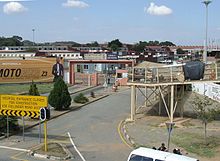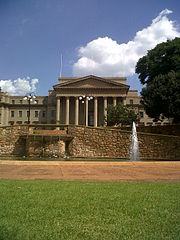21 Aug, 2019
By, Wikipedia
Baragwanath Hospital
History

The Imperial Military Hospital, Baragwanath, was built in what today is Diepkloof in 1942 for convalescing British and Commonwealth soldiers. Field Marshal Jan Smuts noted during the opening ceremonies that the facility would be used for the area's black population after the war. In 1947 King George VI visited and presented medals to the troops there. From this start, grew Baragwanath Hospital (as it became known after 1948), reputedly the largest hospital in the southern hemisphere. In 1997 another name change followed, with the sprawling facility now known as Chris Hani Baragwanath Hospital in honour of the South African Communist Party leader who was assassinated in 1993.
Administration

During the COVID-19 pandemic in South Africa, the Gauteng government spent R 528 million on the hospital; this included a new 500-bed facility. In August 2020, the Public Protector found administrative deficiencies that led to inefficiencies in the delivery of primary health care services. The hospital owes over R 66 million to the City of Johannesburg.
Admissions and operations
More than two thousand patients check into the hospital's specialised clinics and out-patient departments daily, from catchment areas as far as Klerksdorp.
References
- ^ Diptarka Ghosh (3 November 2022). "The 10 Largest Hospitals in the World - WorldAtlas". World Atlas. Archived from the original on 22 March 2024. Retrieved 18 September 2024.
- ^ "Operation by cellphone light bara bosses blamed". Mail & Guardian. 23 January 2014.
- ^ "History". Chris Hani Baragwanth Hospital.
- ^ "OVERVIEW OF CHRIS HANI BARAGWANATH ACADEMIC HOSPITAL" (PDF).
External links
- University of Witwatersrand.
- Just Another Day at the World's Biggest Hospital on NPR's All Things Considered, 1 December 2003. Includes an audio report and a flash presentation.
- Baragwanath History in South Africa: The Baragwanath family history in South Africa.
- 24 hours of trauma TV documentary on the trauma unit by Aljazeera English. 9 January 2009.
| People | ||
|---|---|---|
| History | ||
| Faculties | ||
| Knowledge |
| |
| Campus Life | ||
| Affiliated Hospitals | ||
